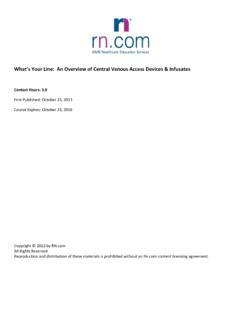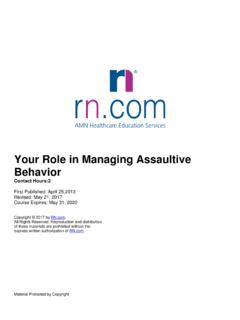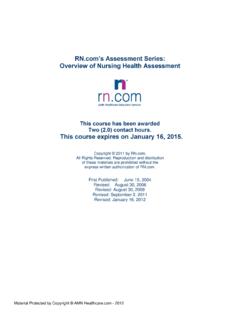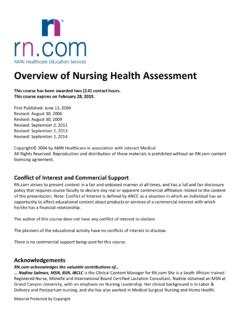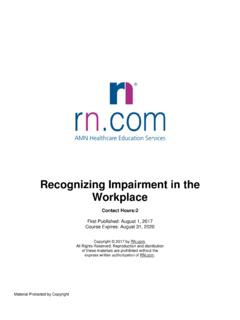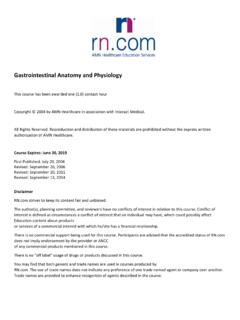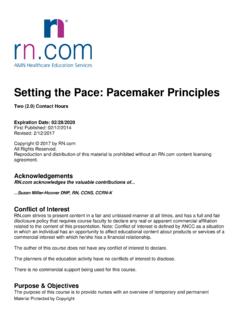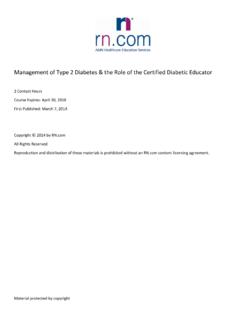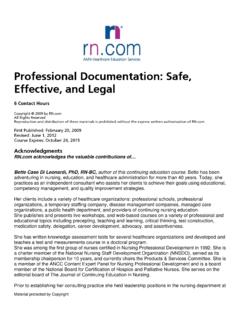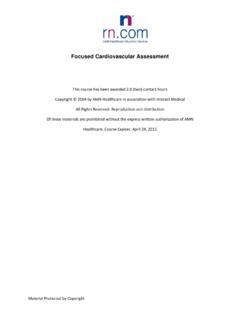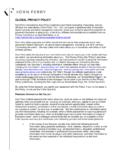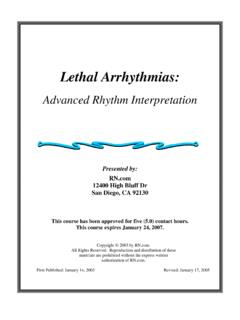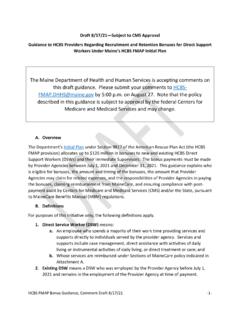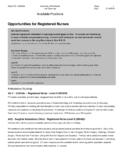Transcription of Telemetry Interpretation - RN.com
1 Telemetry Interpretation This course has been awarded eight (8) contact hours. This course expires on February 28, 2018. First Published: December 15, 2008 Revised: December 15, 2011 Revised: January 9, 2015 Copyright 2008 by Reproduction and distribution of these materials is prohibited without an content licensing agreement. strives to present content in a fair and unbiased manner at all times, and has a full and fair disclosure policy that requires course faculty to declare any real or apparent commercial affiliation related to the content of this presentation.
2 Note: Conflict of Interest is defined by ANCC as a situation in which an individual has an opportunity to affect educational content about products or services of a commercial interest with which he/she has a financial relationship. The author of this course does not have any conflict of interest to declare. The planners of the educational activity have no conflicts of interest to disclose. There is no commercial support being used for this course. Acknowledgements acknowledges the valuable contributions ..Kim Maryniak, RNC-NIC, MSN, PhDc.
3 Kim has over 25 years nursing experience with medical/surgical, psychiatry, pediatrics, and neonatal intensive care. She has been a staff nurse, charge nurse, educator, instructor, manager, and nursing director. Her instructor experience includes med/surg nursing, mental health, and physical assessment. Kim graduated with a nursing diploma from Foothills Hospital School of Nursing in Calgary, Alberta in 1989. She achieved her Bachelor in Nursing through Athabasca University, Alberta in 2000, and her Master of Science in Nursing through University of Phoenix in 2005.
4 Kim is certified in Neonatal Intensive Care Nursing and is currently pursuing her PhD in Nursing. She is active in the National Association of Neonatal Nurses and American Nurses Association. Kim s current and previous roles include research utilization, nursing peer review and advancement, education, use of simulation, quality, process improvement, leadership development, infection control, patient throughput, nursing operations, and professional development. She has presented courses on cardiac rhythms, including development of Interpreting AV (Heart) Blocks: Breaking down the Mystery for.
5 Tanna R. Thomason, RN, MS, CCRN, the primary author of Telemetry Interpretation , formerly titled ECG Interpretation : Learning the Basics. Tanna has over 27 years of experience as a clinician in the hospital setting. After completing her Master s Degree as a Clinical Nurse Specialist from San Diego State University in 1993, Tanna functioned as a critical care Clinical Nurse Specialist for Sharp Memorial Hospital in San Diego, CA. In addition to her Clinical Nurse Specialist role, Tanna has been teaching nursing students since 1998 in an adjunct faculty position at Point Loma Nazarene University.
6 In 2001, Tanna became President of Smart Med Ed, an educational consulting business. Before taking her current positions, Tanna worked in the role of Cardiac Surgical Case Manager at Sharp Grossmont Hospital and as a Clinical Nurse Specialist at Sharp Cabrillo Hospital. Tanna s publications center on research in caring for the acute myocardial infarction, congestive heart failure, interventional cardiology patient populations along with best practices for orientation & training of nurses. Tanna is a member of the American Association of Critical Care Nurses (AACN) and has served in various leadership roles for the San Diego Chapter of AACN.
7 Other memberships include Sigma Theta Tau and the Cardiovascular Council of the American Heart Association. acknowledges the valuable contributions ..Karen Siroky, RN, MSN author of this continuing nursing education course. Karen received her from the University of Arizona and her MSN from San Diego State University. She has been with for over 5 years. Her nursing experience includes ICU, transplant coordination, recruitment , quality improvement, information and education. She has previously published CE courses on numerous clinical topics and has published articles on Quality Improvement and Cardiac Transplantation.
8 Robin Varela, RN, BSN, for updating and editing the revised version of this continuing nursing education course. Robin has over 20 years experience in critical care and emergency department nursing. During her years as a staff nurse and nurse preceptor she has been certified as CCRN, TNCC, BLS, ACLS, ACLS Instructor, PALS and MICN. As an emergency department Clinical Nurse Manager, Varela took an active role in numerous multi-disciplinary committees and partnered with local EMS to co-ordinate emergency preparedness within the community.
9 She has worked for American Mobile Healthcare as a Clinical Services Clinical Liaison RN and works per diem as a critical care transport nurse. Varela completed her BSN in 2003 and plans to begin graduate school the summer of 2007. Purpose The purpose of this course is to provide the healthcare professional the tools to perform basic electrocardiogram (ECG) Interpretation . This course is designed for the healthcare professional who has limited or no previous ECG experience. Key basic rhythms will be taught along with nursing priorities and initial treatment strategies for each rhythm.
10 To facilitate learning, a systematic approach for Interpretation will be used throughout this course. You need limited supplies and tools to make this learning opportunity a success. To enhance ECG strip analysis we recommend you purchase hand calipers to determine heart rate, regularity, and all ECG intervals. If you do not own calipers already, they can typically be purchased for approximately $ at most medical book and uniform stores. Objectives After successful completion of this continuing education self-study course, participants will be able to: 1.
